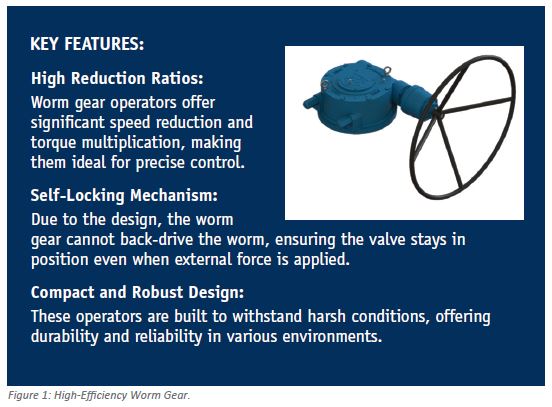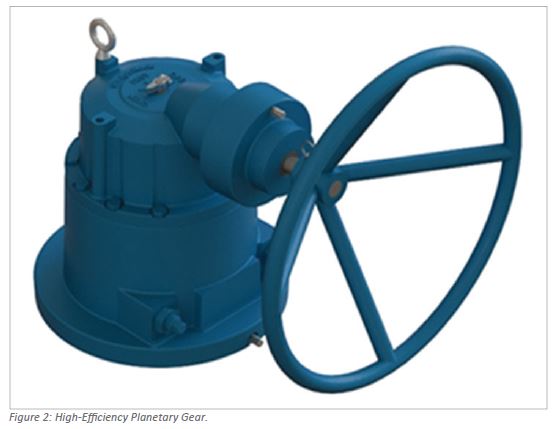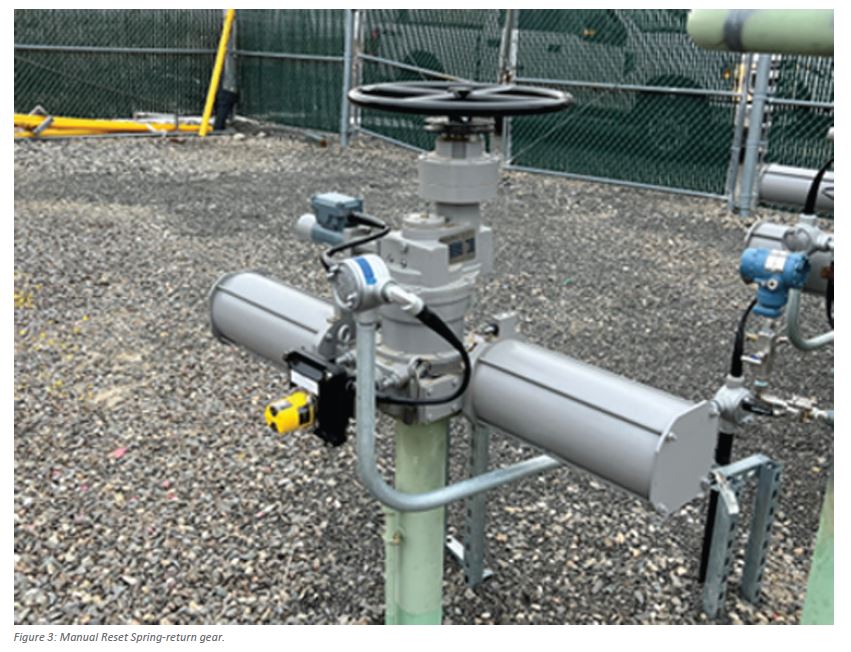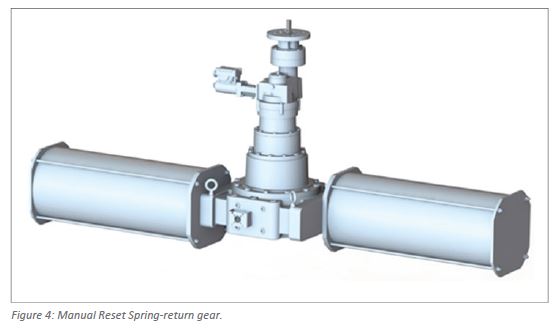Worm gear operators are essential mechanical devices used to control the movement of valves in various industrial applications. They consist of a worm (a screw-like component) and a worm gear (a toothed wheel). When the worm is rotated, it turns the worm gear, converting the rotational motion into linear or angular movement.
By Gobind Khiani – Consulting Fellow – Piping/Pipelines; Keith Pierrotti, President – WedgeRock Engineered Solutions; & Tim Chicoine, Director of Sales – WedgeRock Engineered Solutions
Over the past three decades, valve automation has taken the lead in the flow control industry. While power actuation commands significant attention, imagination, and the majority of market growth, manual valve actuation remains on the rise, benefiting from its own innovations. This article offers an overview of the fundamental principles of these reliable operators and explores current market trends. Additionally, we examine the advantages and costs associated with manual worm gear designs.

Applications
Worm gear operators are widely used in industries such as oil and gas, water treatment, and power generation, where precise control and reliable operation of valves are critical. They are commonly found in gate valves, globe valves, and sluice gates.
By leveraging the unique characteristics of worm gear operators, industries can achieve precise control and reliable performance in their valve operations.
The Range
Manual worm gear operators are ubiquitous in valve applications worldwide. They do not require power, hydraulic, or pneumatic pressure units, making them ideal for remote locations. Whether in submarine duty, mining, waterworks, or oil and gas pipelines, manual worm gear operators are crucial wherever torque is needed.
To understand their utility, adopting the perspective of an application engineer is crucial. Picture them adjusting their horn-rimmed glasses, consulting a detailed spreadsheet, and asking: “Torque or thrust?” The primary consideration when selecting an actuator is the type of force required. Torque, the rotational force needed for positioning ball valves, plug valves, and butterfly valves, will be the focus here.

Understanding the Mechanism
Adhering to American Gear Manufacturers Association (AGMA) standards, a common setup involves a single-start worm driving an 80-tooth worm gear, yielding a 1:80 ratio. This means it takes 80 revolutions of the worm to complete one revolution of the worm gear. While this ratio highlights speed reduction, understanding torque requires examining mechanical advantage (MA). Ideally, a 1:80 ratio would provide an MA of 80, translating 1 unit of input force into 80 units of output force. However, due to inefficiencies, this ideal is not fully realized.
Breaking Down the Costs
Amplifying force through a manual actuator incurs several costs. Factors from monetary costs and effort to efficiency losses are vital to consider when considering worm gear actuators.
Monetary Costs: Worm gear actuators are more expensive than simpler levers or handwheels.
Efficiency Losses: Real-world efficiency for standard single-start metal worm gear sets is less than 35%, with an average around 32%. This means a theoretical MA of 80 reduces to approximately 25.6, indicating significant efficiency losses.
Effort: Increased force requires more turns of the handwheel, trading force for distance.
Selection Considerations
Manual worm gear operators are relatively straightforward. Key selection criteria include torque requirements, dutycycle ratings, valve adaptation, service environment, and available options.
Adaptation: Properly adapting operators to specific valve stems and mounting flanges is crucial to avoid errors.
Environment: Service environments, from the Arctic to deserts to chemically harsh conditions, dictate material and design choices for optimal performance.
Options: Engineers must navigate various optional features, such as handwheel orientation, locking mechanisms, torque input limits, mechanical stops, and remote position indications.

Materials and Design
While bronze is generally a superior gear material compared to iron, the choice of material alone is insufficient for ensuring performance. Gear geometry, clearance, tooth engagement, mating materials, alignment, bearing design, and contact pressure all influence suitability. Working with a reputable manufacturer ensures the selected gear operator meets application-specific needs.

Innovation
As valve manufacturers develop larger, more sophisticated valves with higher torques for remote locations, manual gear operators remain a viable solution. They have evolved with modern enhancements, balancing traditional reliability with new technological advancements.
Typical Industry Gear Operators
Gear operators should be self-locking or equipped with anti-back drive devices for high-efficiency gears. They must be designed to operate under specified conditions, with suitable internal lubricants and materials compatible with the gearbox seals. Gears should meet IP68 standards to prevent water ingress and be designed for a maximum of 50 pounds of rim pull and 200 turns.
Understanding the costs and trade-offs of manual operators helps end users and manufacturers select the right technology for their specific applications.





